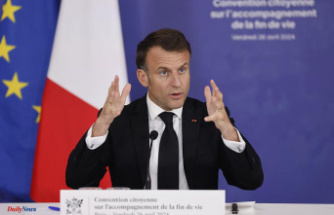The queen is dead, long live the king. Charles III succeeded Elizabeth II. But not only the United Kingdom from Great Britain and Northern Ireland gets a new head of state, but also other countries around the world.
With the death of Elizabeth II, not only the United Kingdom of Great Britain and Northern Ireland loses its queen. Other countries around the world are also mourning the loss of their head of state. Because the Queen was monarch in countries around the world. These include large countries such as Australia and Canada, but also tiny island states such as Antigua and Barbuda or St. Kitts and Nevis.
In 15 so-called Commonwealth Realms, Elizabeth II was formally head of state. However, not as the British Queen. Instead, she bore a separate title for each country: as Queen of Jamaica, New Zealand or Tuvalu. By the way, she only lost a crown in 2021: Barbados renounced the monarch and became a republic on November 30th.
However, Elizabeth II was the queen of a dwindling empire. By the time she ascended the throne, the British Empire had shrunk considerably. The Crown Colony of India broke away around 1947. After 1952, the process of decolonization continued, accelerating in the 1960s and 1970s when African countries in particular shook off their British colonial rule.
Many of these former colonies had fought for their political independence from Great Britain in a long process. Some of them became republics, completely seceding from the British crown. For example, Pakistan became an Islamic Republic in 1956, Ghana followed in 1960, and then South Africa, Tanganyika, Nigeria, Uganda, Kenya, Malawi, Gambia and Sierra Leone up until the 1970s. Guyana also followed this path, as did Malta and later Trinidad and Tobago.
However, other former colonies wished to remain attached to the monarchs by recognizing British kings or queens as their own heads of state. In constitutional terms, these realms are parliamentary monarchies, which are usually organized in a similar way to Great Britain, i.e. with a strong parliament including a prime minister.
Unlike in the mother country, Elizabeth II exercised her office as monarch in the realms not only politically powerless, but also very limited in terms of representation. She was represented - and will now be her successor Charles III. - in each of the states by a governor-general, whom she formally confirmed but could no longer propose. And who is often no longer allowed to be British, but comes from the country itself. This representative also takes on the protocol duties of the head of state.
Under constitutional law, the former colonies, both republics and constitutional monarchies, are on an equal footing with one another and with the United Kingdom. However, only citizens of realms can be knighted by the British Crown.
Together, Great Britain, its former colonies and some other countries form the Commonwealth of Nations, a loose association of sovereign states. Among the current member states of the Commonwealth are 15 realms where the Queen was head of state. There are also dozens of republics and constitutional monarchies from other dynasties. A total of 56 countries currently belong to the Commonwealth. The number fluctuates, however, since states can be suspended for misconduct or leave of their own accord. Queen Elizabeth II acted as head of this Commonwealth until her death. Here, too, she now follows Charles III.












